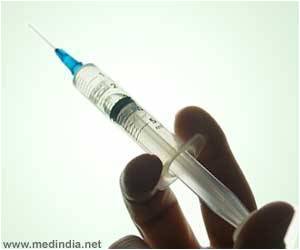“Mutations in the genes encoding the proteins responsible for the metabolic processes involving vitamin B12 result in rare human inborn errors of cobalamin metabolism,” said co-corresponding author Dr. Ross A. Poch, associate professor of molecular physiology and biophysics at Baylor.
Patients with the most common inherited vitamin B12 disease, called cblC, suffer from a multisystem disease including intrauterine growth restriction, hydrocephalus, severe cognitive impairment, intractable epilepsy, retinal degeneration, anemia, and congenital heart malformations.
Previous work had shown that mutations in the MMACHC gene cause cblC disease.
It also was known that some patients presenting with a combination of typical and non-typical cblC characteristics do not have mutations in the MMACHC gene but rather in genes that code for proteins called RONIN (also known as THAP11) and HCFC1. The resulting changes in these proteins lead to reduced MMACHC gene expression and a more complex cblC-like disease.
In this study, Poch and his colleagues looked for other genes that also might be affected by HCFC1 and RONIN gene mutations.
“We developed mouse models carrying the same mutations that the patients with cblC-like disease have in HCFC1 or RONIN genes, and recorded the animals’ characteristics,” Poche said.
“We confirmed that they presented with the cobalamin syndrome as expected, but in addition, we found that they had ribosome defects. This is the first time that the HCFC1 and RONIN genes have been identified as regulators of ribosome biogenesis during development.”
The researchers demonstrate that this cblC-like disease affecting the function of RONIN and HCFC1 proteins is a hybrid syndrome as it is both a cobalamin disorder and a condition of ribosomes, or a ribosomopathy.
The findings have potential therapeutic implications. “Some cblC-like patients may respond to some extent to cobalamin supplementation, but we anticipate that will not help the issues due to ribosome defects,” said Poch, member of the Dan L Duncan Comprehensive Cancer Center.
One step toward designing effective ribosomopathy therapies is to better understand the defects in the ribosomes. “We plan to functionally characterize the altered ribosomes at the molecular level to identify how their function is disrupted,” Poche said.
“There are many exciting aspects of this study, from the clinical implications to the basic science.
The beauty is in how they work in patients is symbiotic with the work in the mouse model and how each system informs the other,” said co-author Dr. David S. Rosenblatt, professor in the departments of human genetics, medicine, pediatrics, and biology at McGill University and senior scientist at the Research Institute of the McGill University Health Centre.
Source: Medindia



